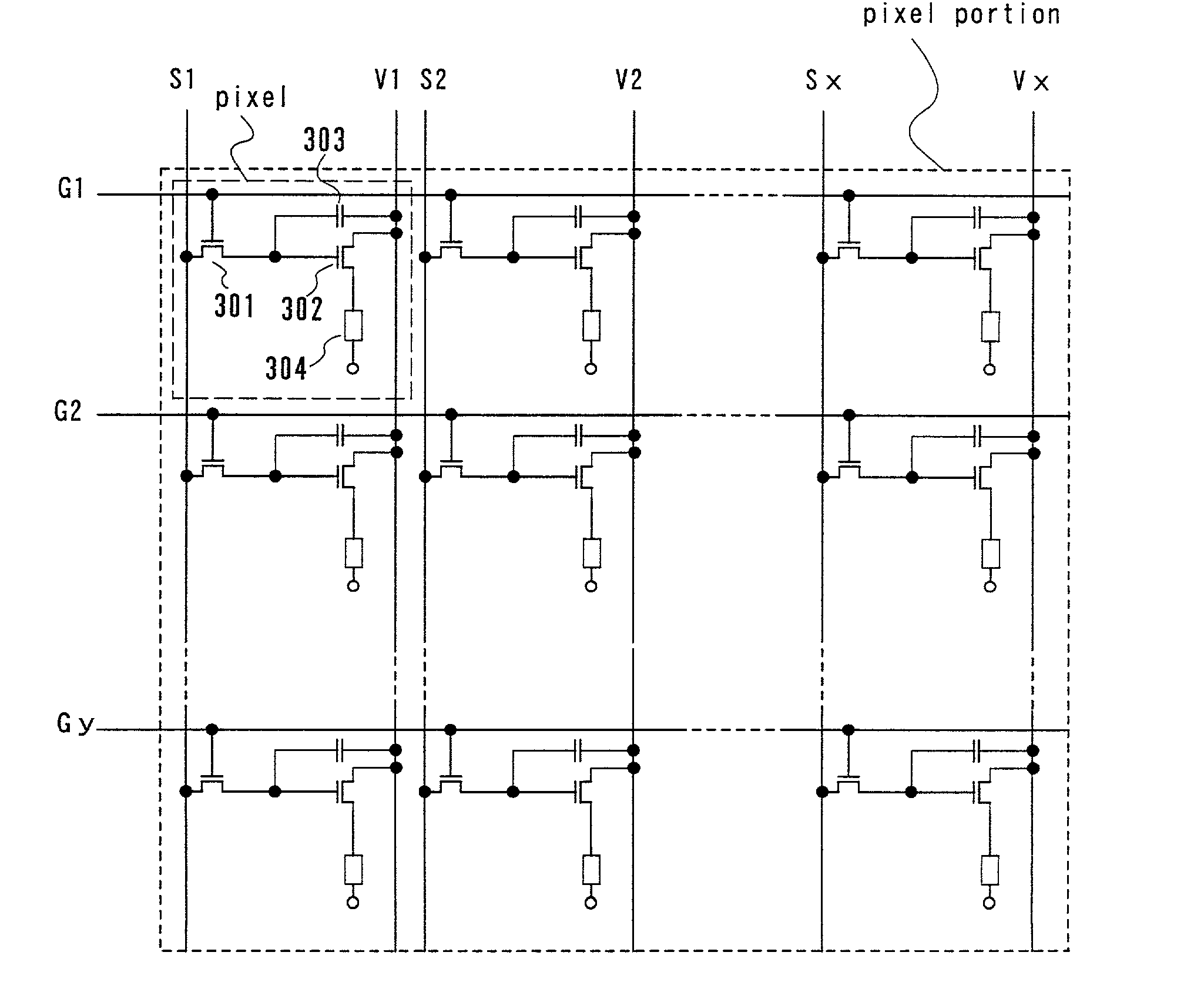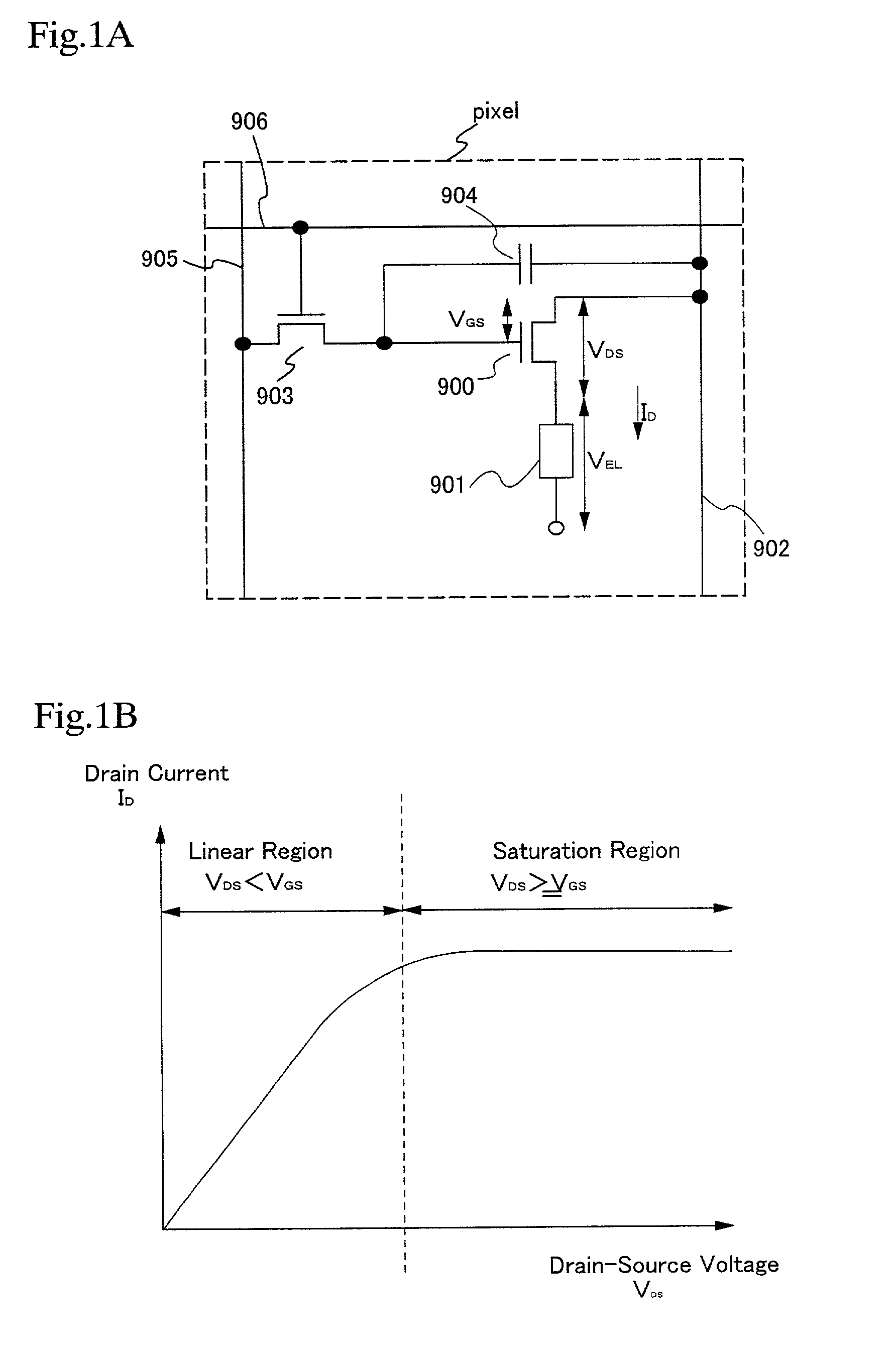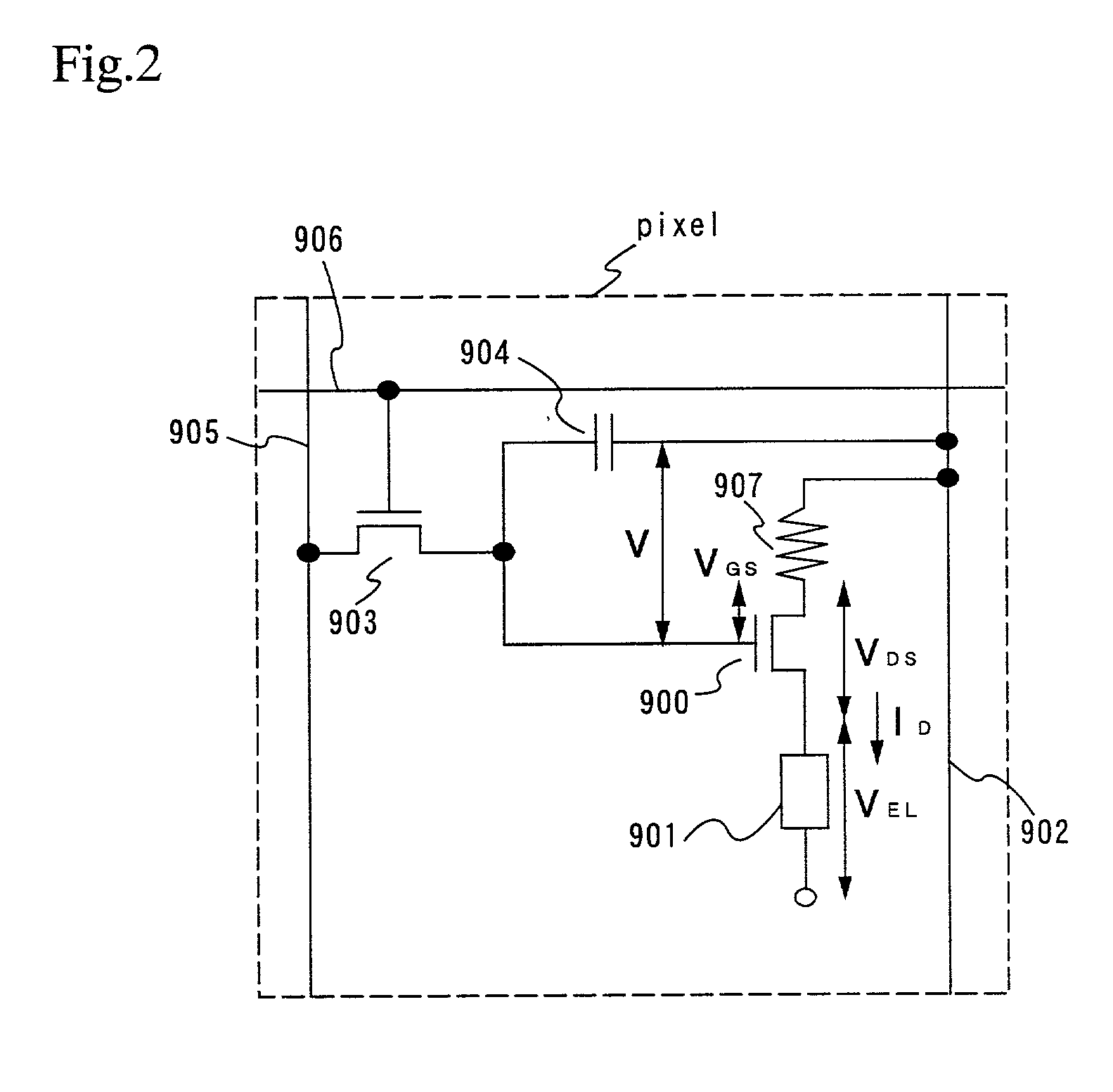Method of driving display device
a display device and electronic technology, applied in the direction of diodes, organic semiconductor devices, instruments, etc., can solve the problems of gray scale display, large differences in emission amounts of el elements between adjacent pixels, and gray scale display actually becoming far more non-uniform
- Summary
- Abstract
- Description
- Claims
- Application Information
AI Technical Summary
Problems solved by technology
Method used
Image
Examples
embodiment 1
[0099] (Embodiment 1)
[0100] Embodiment 1 relates to the method in the above description of the embodiment mode of the present invention, i.e., the method of operating the EL driving TFT in the saturation region to keep constant the drain current I.sub.D which flows across both electrodes of the EL element, and the following description of Embodiment 1 is a method of suppressing the influence of the unevenness of the characteristics of EL driving TFTs. The following description uses the same reference numerals and used in FIG. 1A as well as newly added ones.
[0101] In the case where the EL driving TFT 900 is operated in the saturation region, the following equation (1) is obtained:
I.sub.D=.alpha.(W / L)(V.sub.GS-V.sub.th).sup.2 (1)
[0102] In equation (1), I.sub.D is the drain current, V.sub.GS is the gate voltage, V.sub.th is the threshold voltage, W is the gate width, L is the gate length, and .alpha. is a constant. In this case, since the threshold voltage V.sub.th has variations, the ...
embodiment 2
[0107] (Embodiment 2)
[0108] Embodiment 2 relates to the method in the above description the embodiment mode of the present invention, i.e., the method of operating the EL driving TFT in the saturation region to keep constant the drain current I.sub.D which flows across both electrodes of the EL element, and the following description of Embodiment 2 is a method of suppressing the influence of the unevenness of the characteristics of EL driving TFTs by a method different from that used in Embodiment 1.
[0109] FIG. 2 is a circuit diagram showing the construction of a pixel portion of an EL display device according to Embodiment 2. The pixel portion shown in FIG. 2 is the same in basic structure as that shown in FIG. 1A, and in the following description, the modified portions of the construction shown in FIG. 1A are denoted by different reference numerals.
[0110] The gate electrode of the switching TFT 903 is connected to the gate signal line 906. Either one of the source and drain region...
embodiment 3
[0120] (Embodiment 3)
[0121] Note that a description is set forth regarding a step for fabricating TFTs for driver circuit (a source signal line driver circuit and a gate signal line driver circuit) provided in the pixel portion of a display device using the driver method of the present invention and periphery portion of the pixel portion. For the simplicity of the explanation, a CMOS circuit is shown in figures, which is a fundamental structure circuit for the driver circuit portion.
[0122] First, as shown in FIG. 8A, a base film 5002 made of an insulating film such as a silicon oxide film, a silicon nitride film, or a silicon oxynitride film, is formed on a substrate 5001 made of a glass such as barium borosilicate glass or aluminum borosilicate glass, typically a glass such as Corning Corp. #7059 glass or #1737 glass. For example, a lamination film of a silicon oxynitride film 5002a, manufactured from SiH.sub.4, NH.sub.3, and N.sub.2O by plasma CVD, and formed having a thickness of...
PUM
 Login to View More
Login to View More Abstract
Description
Claims
Application Information
 Login to View More
Login to View More - R&D
- Intellectual Property
- Life Sciences
- Materials
- Tech Scout
- Unparalleled Data Quality
- Higher Quality Content
- 60% Fewer Hallucinations
Browse by: Latest US Patents, China's latest patents, Technical Efficacy Thesaurus, Application Domain, Technology Topic, Popular Technical Reports.
© 2025 PatSnap. All rights reserved.Legal|Privacy policy|Modern Slavery Act Transparency Statement|Sitemap|About US| Contact US: help@patsnap.com



